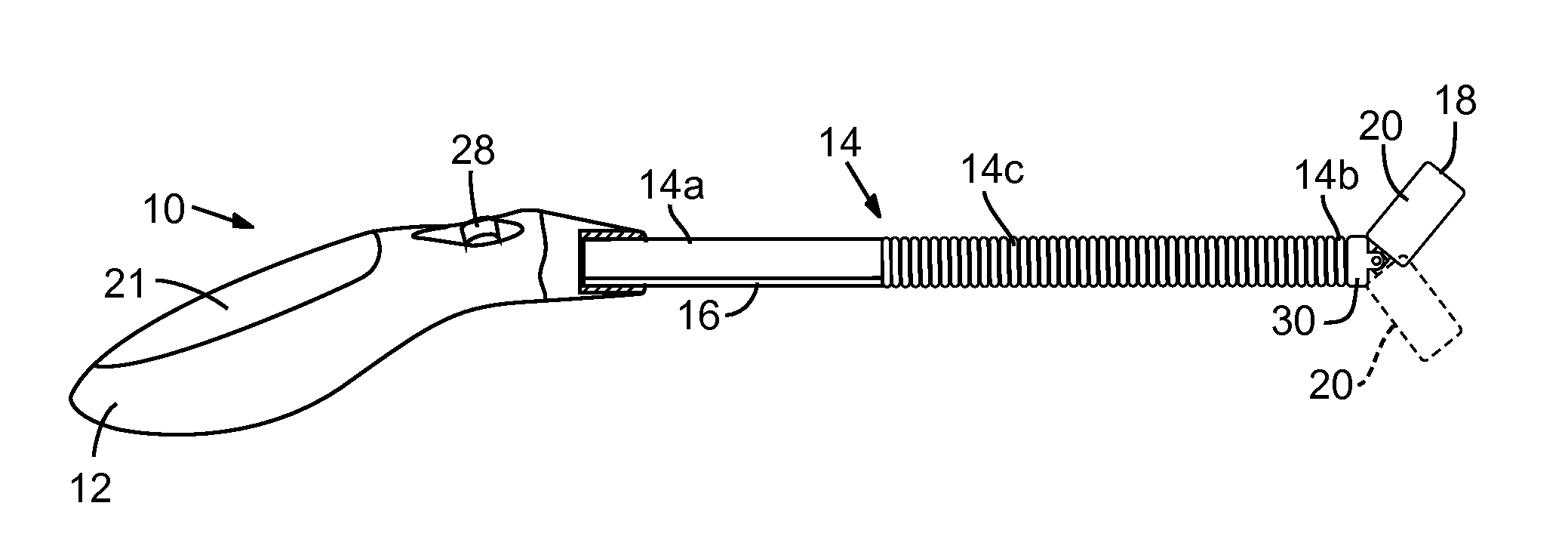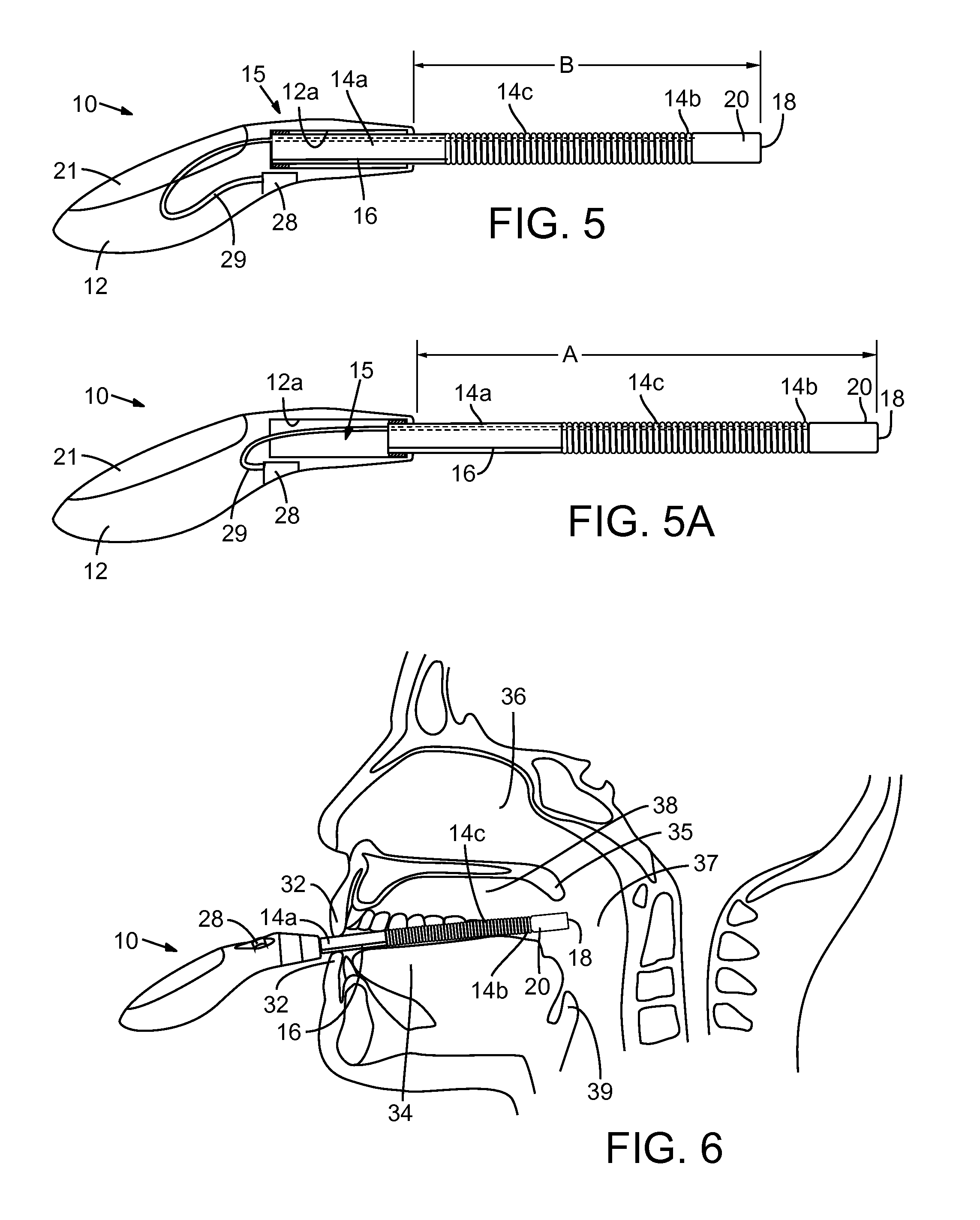Oral scope system with image sensor and method for visual examination of oral cavity and upper airway
a technology of image sensor and scope system, which is applied in the field of oral cavity and upper airway visual examination with image sensor, can solve the problems of hampered and restricted vision of mouth and throat, difficult inspection and examination of oral cavity and upper airway, and inability to see the mouth and throa
- Summary
- Abstract
- Description
- Claims
- Application Information
AI Technical Summary
Benefits of technology
Problems solved by technology
Method used
Image
Examples
Embodiment Construction
[0028]As described in more detail below, the present disclosure includes several embodiments of an oral scope used in a system for facilitating visual examination and inspection of the oral cavity and upper airway of a person's mouth. The oral scope can be used by a person for self-examination, to determine if a symptom in their oral cavity or upper airway is abnormal or pathological. The oral scope can also be used by an adult, such as a parent to examine the condition of children, to determine visually the location and condition of an area of the mouth or throat that a child appears to have symptoms of some abnormality. The oral scope, in its various embodiments, may utilize an image sensor, such as a still image camera, a video camera or a thermal image camera to capture or record an image, which may then be compared to normal anatomy, thereby to provide an initial diagnosis, and provide guidance for further treatment, if deemed necessary.
[0029]A first embodiment of an oral scope...
PUM
 Login to View More
Login to View More Abstract
Description
Claims
Application Information
 Login to View More
Login to View More - R&D
- Intellectual Property
- Life Sciences
- Materials
- Tech Scout
- Unparalleled Data Quality
- Higher Quality Content
- 60% Fewer Hallucinations
Browse by: Latest US Patents, China's latest patents, Technical Efficacy Thesaurus, Application Domain, Technology Topic, Popular Technical Reports.
© 2025 PatSnap. All rights reserved.Legal|Privacy policy|Modern Slavery Act Transparency Statement|Sitemap|About US| Contact US: help@patsnap.com



